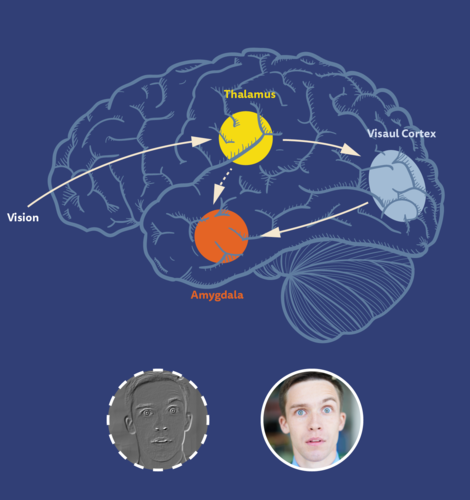We are our memories
Our brain is not hard-wired. Our state of mind, emotional content of experiences, and the environment in which a memory event happens all affect how, how strong, and how long we remember an experience.
Every experience leaves its mark physiologically on the neural network. Memory is strengthened or weakened by neuronal connections participating in the memory event. Even though certain memories are processed in certain areas of the brain, they are subject to modification by new experiences.
Also, as neurons die or are used for other circuits, the clarity, definition and intensity of some memories may fade.
Some controversial studies have even shown that every time a memory is recalled, it undergoes re-consolidation and may be subjected to changes due to interference. More research is needed to confirm these findings.
Normal brain functioning
Our ability to transform and consolidate new experiences into long-term memory requires normal functioning of brain structures that include the hippocampus, the medial temporal lobes, the thalamus, and their connections to other structures.
The hippocampus is critical for encoding information into memory. The amygdala, which provides emotional context to sensory input, colors our memories with feeling.
Memories of faces and objects seem to be processed in the temporal lobes, landscapes and patterns in the parietal lobes, and social encounters in the frontal lobes.
The cortex links elements of memories, making them part of our integrated memory experience. It is here that memories long buried, even those beyond conscious recall, can be triggered with all their richness of sight, smell, and sound.
Non-declarative or procedural memory seems to be processed mainly in the premotor cortex, the basal ganglia and the cerebellum.
The power of suggestion
While sensory associations can trigger some memories, suggestions can change others. Preconceptions, prejudices, unexamined assumptions may all influence and color memory.
For example, psychological studies show that test participants who failed to recall a childhood event would “remember” the event in elaborated details after they were told (lied to as part of the experiment) by relatives that the false event did happen.
Another study found that 20% of test participants who failed to recall a false childhood event “remembered” it in details a week after they were encouraged to think about it.
Emotional content
We tend to remember emotionally charged events better. This is especially true for women. It is the emotion aroused that helps memory, not the importance of the experience.
We tend to remember less of what precedes an experience with strong emotional content, as well as other information encountered at the same time. That is why details of events leading up to a traumatic experience may be hard to recall.
In general, we remember pleasant experiences better. However, depressed individuals seem to remember pleasant and unpleasant events equally well.
State of mind, emotion and attention
Environmental distractions can interfere with the formation and consolidation of a memory. Our emotional state also affects what is noticed, and what is remembered.
We tend to remember experiences that match our momentary state of emotion – sad memories when feeling sad. It is also easier to remember an experience in the same state of mind as when it was encoded – by evoking a sad emotion, we can remember a sad experience better.
Strong emotional content usually gets more attention. It is the amygdala that mediates emotion and attention. Studies show that the amygdala drives attention to emotion-laden – especially fear-laden- visual input.
Fear provoked by an image that signals danger such as a fearful face or an inoffensive image paired with an unpleasant experience, capture attention. Even patients with damaged parietal lobes are less likely to miss a flashed face with a fearful expression than a neutral one. (The parietal lobes help to direct attention to visual stimuli.)
It is interesting that there is increased activity in the amygdala even when the person is not consciously aware of the fear cue. In one study, a fearful face is flashed briefly on the screen and immediately replaced by a neutral face.
Viewers have not noticed the fearful face and only reported having seen the neutral one. But neuroimaging showed increased activity in their amygdala.
Over-generalized fear
Sometimes memory of a fear-inducing situation can become over-generalized to trigger more fear. How?
Joseph LeDoux of New York University has shown that repeatedly placing rats in fear-inducing situation bring about strengthened synaptic connections in the amygdala. Sumantra Chattarji of the National Center for Biological Science in Bangalore further illustrates that in stressful situations, the amygdala neurons in rats grow new branches, allowing them to connect with more neurons.
Any part of the fear-inducing situation, sound, sight etc., and even abstract associations or memory of it, may end up triggering more firing between the amygdala neurons. The more this fear pathway is used, the easier it is to trigger, so a vicious cycle is formed.
But the brain is dynamic, changing from moment to moment. Our memories remain modifiable by subsequent experiences and states of mind. There are therapies and medications to help block this kind of vicious cycle and it is important to keep a positive outlook.

